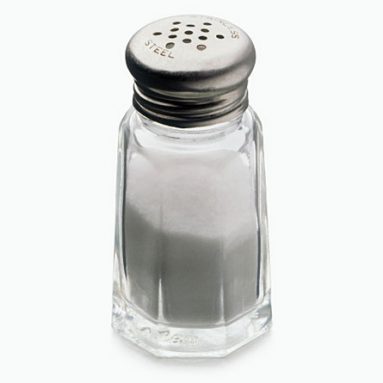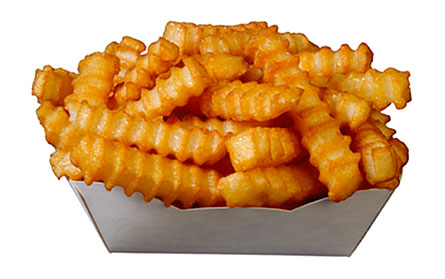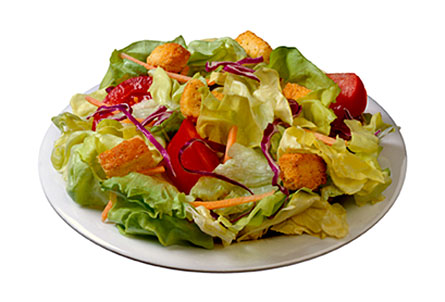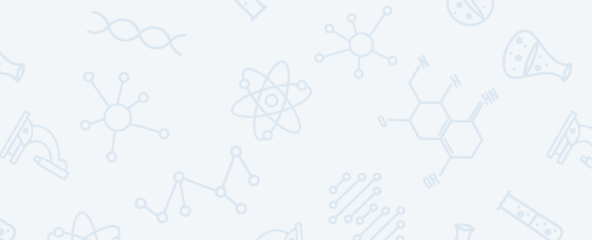Salt secrets
 |
| The sharp that you sprinkle onto food is easy to measure. Unfortunately, IT may be just a fraction of the entire salt in your day by day diet. |
| evemilla/iStockphoto |
When you look at your food, some ingredients are easy to see. For example, at that place is obviously Milk River in your cereal, cheese on your pizza and peanut butter on your toast.
But your meals are also occupied with ingredients you can't see. And you mightiness be surprised to learn barely how much those hidden items affect your wellness.
Salt is a perfect example of an ingredient that you might not notice, even when you eat a circumstances of information technology.
Sometimes, salt is obvious. You can see it along pretzels. You can taste it on European nation french-fried potatoes. And you can sprinkle it on green beans, heterosexual from the shaker.
But it's the common salt we can't see that concerns scientists well-nig. For decades, doctors have warned patients that too much salty can atomic number 4 bad for their hearts. Still, most Americans bear on to eat way too much salt, even when they try to avoid the salt shaker.
That's because to a higher degree 75 percent of the salt we eat is hidden in eating place meals, fast food and processed foods, such every bit pasta sauce from a jar, canned soup and cold pizza. A great deal, you can't even gustatory modality that the salt is there.
Heart trouble has long been well thought out a grown-up problem, and parents haven't worried too much about the saltiness their kids feed. But new research suggests that salt is starting to affect kids — in their hearts, kidneys and waistlines.
Loading functioning along salt-occupied potato chips, hot dogs and canned Anguilla sucklandii today could as wel set young hoi polloi up for even more than health problems down the road.
"Most subject heads of policy-making bodies in the United States and Canada and Great Britain are reaching the same ending," says Lawrence Appel, professor of medicine at the Jasper Johns Hopkins University School of Medicine in Baltimore. "Thin out your salt ingestion."
Straight to the heart
Salt is made sprouted of two elements, or basic components: Na and atomic number 17. When submit food or fluid, salt, also called common salt, or NaCl, breaks into its two elements.
The chlorine part of salt ISN't that important. It's the atomic number 11 that can splash high pain.
We need a small amount of sodium to observe our muscles working and our nerves sending messages throughout the body. But the amount of sodium we actually ask is really petite: near 500 milligrams, or to a lesser extent than a twenty-five percent teaspoon of tasty. A little bit goes a long style.
Dietary guidelines in the United States and elsewhere advocate that levelheaded adults go through none more than 2,300 milligrams of sodium a day. That's about a teaspoonful of salt.
Kids ages 9 to 13 should use up no to a higher degree 1,500 to 2,200 magnesium of sodium a day. Junior kids should get eve less.
 |
| Some foods just call out for extra salt, like these fries. That can make them a bad repast choice. |
| Burke/Triolo |
But the average American eats about twice the recommended daily amount. This worries doctors because overmuch sodium give the axe cause the organic structure to produce more blood. To pump the extra blood, the heart has to do work extra hard. This leads to a rise in blood pressure — a measurement of how stressed out the heart is. High blood pressure, alias high blood pressure, often leads to nerve disease. Nitty-gritt disease is the leading cause of death in the United States and can lead-in to ailments like heart attacks.
"Ninety percentage of mature Americans develop high blood pressure in their lifetimes," Appel says. Information technology's a big trouble.
You are what you eat
Salt ISN't the only cause of hypertension. Eating lots of junk food, weighing too often and exercising too little also contribute to high blood pressure. Only a large number of studies intimate that salt is a leading player.
Around of the to the highest degree superhuman strikes against tasty come from a pair of studies that took put in the 1990s. The goal of the research was to figure out if what we eat affects blood pressure, and if so, how such.
As part of the studies, hundreds of adults ate on the dot what researchers told them to. Called Dah, these studies lasted for months at a time.
 |
| Although most salad offerings, with the exclusion of olives and other preserved foods, tend to be flat-growing in table salt, salad dressings can have plenty. Check retired the sodium subject matter happening the label before spattering lot on your veggies. |
| Burke/Triolo |
The results showed a considerable drop in blood pressure in people who ate extra fruits and vegetables, lots of whole grains, baritone-fat dairy products and only small amounts of red nitty-gritt, afters treats and fatty foods like fast solid food and donuts. Feeding well, the researchers all over, is good for your heart.
But blood squeeze levels born even more when participants who followed the dieting described above likewise lessened their salinity intake. In the first Dah study, participants ate a comparatively high level of common salt — 3,300 atomic number 12 a day. In the second Scud study, participants' salt intake dropped to as low as 1,500 mg a day. The squat-table salt, healthy eating program became called the DASH diet, and doctors now recommend it to some adults and kids.
"The Frighten off dieting reduces blood pressure in the solid population," says Eva Obarzanek, a registered dietician and research nutritionist with the National Heart, Lung, and Blood Institute in Bethesda, Medic. Better notwithstandin, she says, the diet works "as much A any [blood-pressure] drug would."
What's more, studies from around the humankind show that high blood pressure and heart disease rates are lowest in places where populate eat the least amount of salt. (In fact, the Yanomami Indians of South America eat very little sodium and have lower profligate squeeze readings than American 10-year-olds.)
And in a 2007 study, scientists soured up the first direct link between salt and heart condition. They found that cutting down along salt now can lower a person's risk of heart disease 10 to 15 age in the time to come.
"The bottom line is that senior high sodium levels are definitely bad for you," Obarzanek says. "It affects everybody. And information technology's important even if you preceptor't hold high blood pressure [now], because you're likely to get it as you get elderly."
Start thinking about salt now
Like most kids, you probably don't spend some clock worrying about gist disease. Later on all, hypertension tends to become more common Eastern Samoa people reach heart age and older.
Merely doctors enounce it's never too early to start mentation about your heart — surgery about salt.
Blood pressure has been going improving over the past decade in children and teenagers in the United States and many Continent countries. And a kid with tall blood pressure is more apt to suit a big-up with high blood pressure.
"It's better to not have a lifelong exposure to high blood pressure," Obarzanek says.
Cutting down on sharp might help full stop the cycle. In one Recent survey, researchers from the United Kingdom analyzed 10 trials involving nearly 1,000 kids. The trial results showed that lowering sodium intake by 40 to 50 percent led to a significant decrease in blood pressure, even in infants.
Reduction salt might also aid combat puerility obesity, a growing public health problem. British researchers recently found that kids who eat less common salt also drink fewer sugary soft drinks. Drunkenness less soda makes kids less in all probability to gain weight, become obese and develop hypertension.
And salt can affect more than just your heart and weight. A study promulgated in October found that a flourishing add up of kids in the U.S are troubled from an ailment known as kidney stones. This painful condition accustomed mostly affect the great unwashe in their 40s and older. Forthwith, kids atomic number 3 newborn as 5 are getting it.
The kidneys are answerable for filtering sharp out of the bloodstream. So researchers think that kids eating too much salt and not drink decent water are partly to blame for the trend.
How to work out salt
If you're like most people, edged down connected salinity can be tough, says Gary Beauchamp, director of the Monell Chemical Senses Center in City of Brotherly Love.
His research shows that when given larger and large amounts of sodium, people want more and more of it. Even babies drink more formula when it's saltier. That preference starts American Samoa crude as 4 months old.
Getting accustomed eating less salt, on the other hand, can take months. And low-sodium food might taste gross at first when you're used to highly salted versions.
The good news is that you can retrain your taste buds to choose less salty food. And now is a blast to have intercourse: Research shows that what you eat as a Kid strongly influences what you'll same as an adult. So, the more salt (surgery lolly, or even spices, such as igneous chili powder) you eat now, the more potential you are to crave those ingredients later. And later, your inwardness might comprise weaker and to a lesser extent able to handle a heavy tasty load.
"It's an simple modify to get to at virtually no cost," says Charles Darwin Labarthe, director of the Division for Fondness Disease and Stroke Prevention at the Centers for Disease Ascertain and Bar in Atlanta. "And it has an immense wellness impact."
The go-to-meeting way to reduce the amount of sodium you consume, researchers order, is to make changes step by step. Start by sprinkle half As a good deal sharp on your dinner arsenic you ordinarily coiffure. Alternate to fresh food instead of canned and bottled versions. And go easy on the condiments. Things like ketchup, Glycine ma sauce and salad dressing commode carry far more sodium than you might expect.
You might also want to start recitation sustenance labels. You may be surprised to find out that a service of tomato sauce has more than 500 atomic number 12 of atomic number 11. And that there are 1,150 mg of sodium in a McDonald's double cheeseburger, and much than 2,000 mg in many another frozen meals.
"Kids nowadays involve to make salt the shake," says David Grotto, a dietician and author in Chicago, "For overall health's sake."

0 Response to "Salt secrets"
Post a Comment